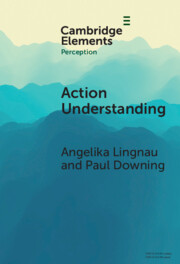The article analyzes the neural and functional grounding of language skills as well as their emergence in hominid evolution, hypothesizing stages leading from abilities known to exist in monkeys and apes and presumed to exist in our hominid ancestors right through to modern spoken and signed languages. The starting point is the observation that both premotor area F5 in monkeys and Broca's area in humans contain a “mirror system” active for both execution and observation of manual actions, and that F5 and Broca's area are homologous brain regions. This grounded the mirror system hypothesis of Rizzolatti and Arbib (1998) which offers the mirror system for grasping as a key neural “missing link” between the abilities of our nonhuman ancestors of 20 million years ago and modern human language, with manual gestures rather than a system for vocal communication providing the initial seed for this evolutionary process. The present article, however, goes “beyond the mirror” to offer hypotheses on evolutionary changes within and outside the mirror systems which may have occurred to equip Homo sapiens with a language-ready brain. Crucial to the early stages of this progression is the mirror system for grasping and its extension to permit imitation. Imitation is seen as evolving via a so-called simple system such as that found in chimpanzees (which allows imitation of complex “object-oriented” sequences but only as the result of extensive practice) to a so-called complex system found in humans (which allows rapid imitation even of complex sequences, under appropriate conditions) which supports pantomime. This is hypothesized to have provided the substrate for the development of protosign, a combinatorially open repertoire of manual gestures, which then provides the scaffolding for the emergence of protospeech (which thus owes little to nonhuman vocalizations), with protosign and protospeech then developing in an expanding spiral. It is argued that these stages involve biological evolution of both brain and body. By contrast, it is argued that the progression from protosign and protospeech to languages with full-blown syntax and compositional semantics was a historical phenomenon in the development of Homo sapiens, involving few if any further biological changes.


